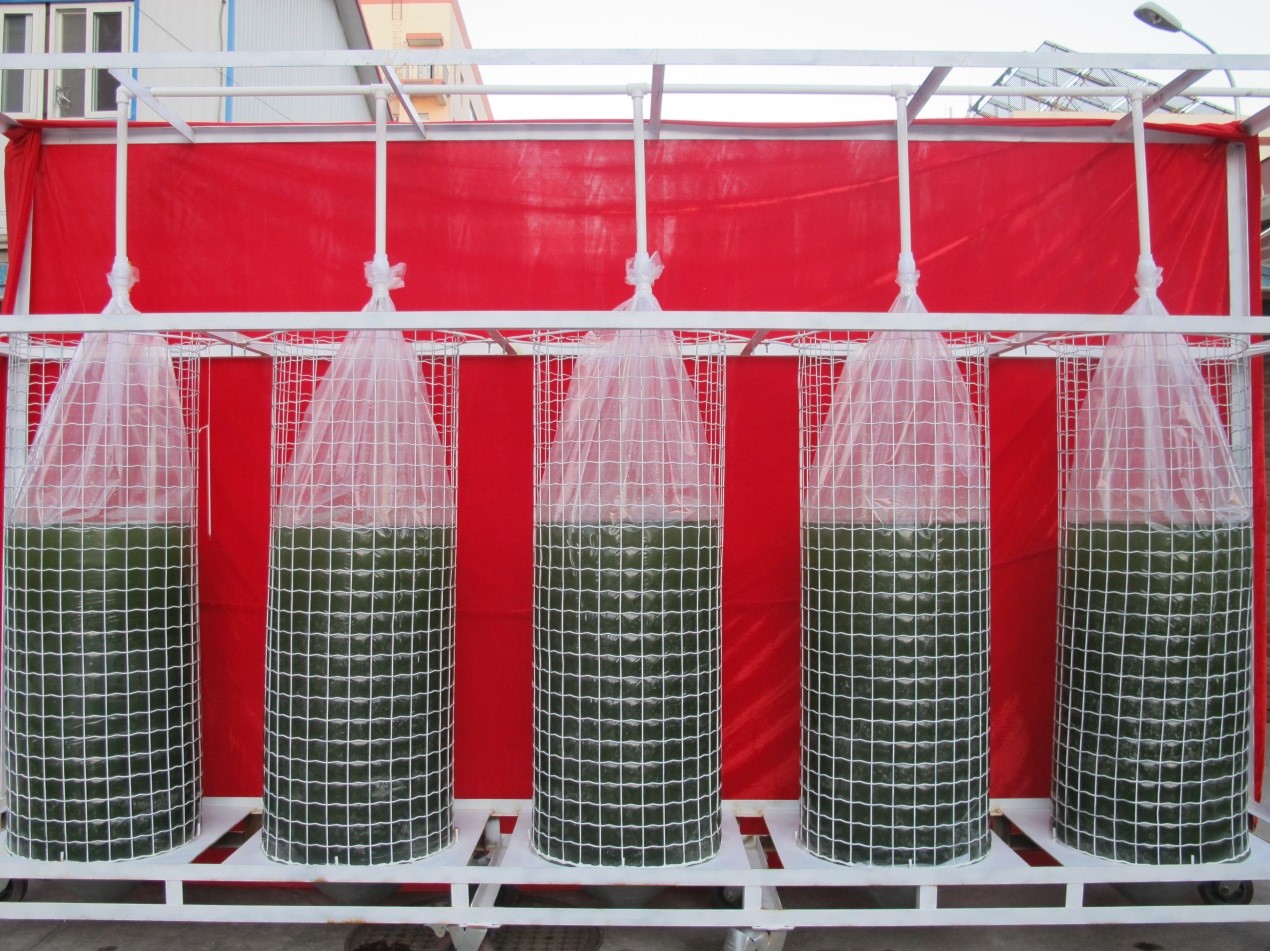Microalgae are photoautotrophic sunlight-driven cell factories that can convert carbon dioxide to various products such as lipids, carbohydrates, proteins, fatty acids, vitamins, antibiotics, and antioxidants. Chlorella ellipsoidea is a single-celled eukaryotic green algae which is rich in high-quality proteins, vitamins, lipid-soluble compounds, glycolipids, sulfolipids, and compounds used as food additives. For the industrial production of products from microalgae, it is necessary to evaluate the feasibility of scaled-up outdoor culture systems. Although there are numerous reports describing the outdoor cultivation of microalgae, studies focusing on C. ellipsoidea are rare and the culture scale in published studies is limited. It is important to understand the variations in growth and metabolism between indoor and outdoor cultivation conditions in order to determine the feasibility of outdoor cultivation for this species. Recently, a 200 L outdoor cultivation system (Fig 1) was constructed using a bubble column bioreactor made of a polyethylene membrane by Prof. LIU Chunzhao’s group in Institute of Process Engineering, Chinese Academy of Sciences. The cultivation of C. ellipsoidea in bubble column bioreactors was scaled-up from the 20 L indoor culture to a 200 L outdoor culture, and the biomass, fatty acid content and composition, protein content, and amino acid composition were investigated and compared with that of 2 L sterilized flanged glass bioreactor. The results indicated that the algal cells were able to quickly adapt to the outdoor conditions and achieved a growth rate of 31.55 mg L-1 day-1. Due to differences in light and temperature, the outdoor culture produced a higher percentage of unsaturated fatty acids compared to the indoor cultures, while the amino acid composition was unaffected. The overall cost of the biomass produced by the 200 L outdoor cultivation (58.70 US$/kg-dry weight) was estimated to be more than 7 times lower than that of the 20 L indoor cultivation (431.39 US$/kg-dry weight). Together these results provide a basis for the cultivation of C. ellipsoidea for the large-scale production of biofuels, high-value nutrients and/or recombinant proteins. This work was has been published on Bioresource Technology (2014, 156: 117 – 122) and was financially supported by the Major State Basic Research Development Program (973 Project) of China (No. 2011CB200903), the Knowledge Innovation Program of the Chinese Academy of Sciences (No. YZ200947), and the Chinese Academy of Sciences Fellowships for Young International Scientists (No.2011Y1GA01). 
Fig Plastic bubble column bioreactors (200 L×5) under outdoor conditions.(Image by IPE)
|